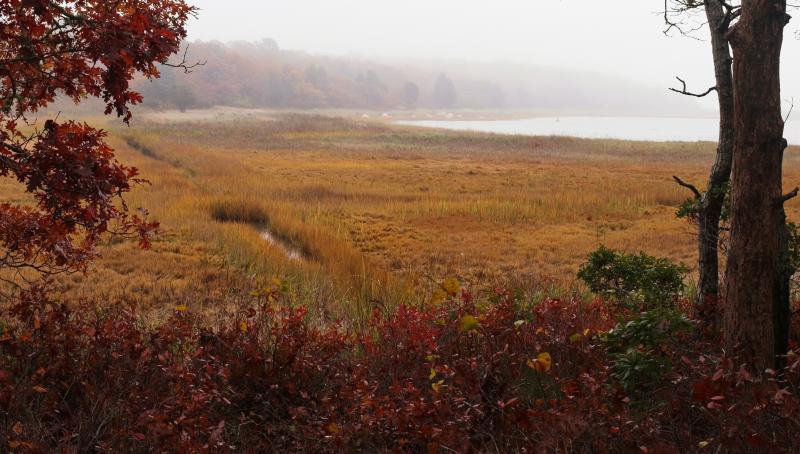Mass Audubon preserves former Sacred Heart property
Mass Audubon has formerly taken ownership of the Sacred Hearts property, and the land is now part of the Great Neck Wildlife Sanctuary, which now stretches over more than 200 acres and features one mile of coastline.
In February of this year, the Audubon Society raised $2.6 million to purchase the 110 acre property.
The sanctuary also abuts an additional 130 acres of land protected by conservation restrictions. The protected land features many different habitats: salt marshes, coastal forest, and beaches.
“One of the bigger assets that we have here is the coastal forest,” said Gina Purtell of Mass Audubon. “Coastal forest tracts are few and far between now.”
Purtell said that all of the habitats in the sanctuary have been very vulnerable to development, as many coastal forests have been cut down and salt marshes have been dredged and drained to make way for construction.
Protecting the salt marshes will allow the land to better adapt to rising sea levels, and serve as buffers against higher tides and stronger coastal storms. The sanctuary will also be a place for visitors to become more connected with nature and especially with the effects of climate change.
Now that the land has been protected, Mass Audubon is focusing on “re-wilding” the property. Many of the buildings on the property will be torn down, as maintaining them would be cost-prohibitive. The Society will maintain a facility on the property for educational programs, but Purtell said that the size and scope of that facility hasn’t been determined yet.
The sanctuary’s extensive lawns and landscaping will be replanted with native flowers and grasses to provide habitats for pollinators and other insects.
The land is also home to a healthy population of amphibians and reptiles, including Eastern box turtles.
Many different birds visit the sanctuary throughout the year. In the summer, species including the wood peewee and brown creeper breed. Purtell said that the coastal forest is the perfect habitat for the brown creepers, which are “such a treat to find.”
In the fall, many birds fatten up before migrating, and the berry bushes along the shore are the perfect spot for them to find food.
In the winter, species including red throated loons, common eider, buffleheads, and widgeons spend the season on the shore. Purtell said all these species will benefit from having a parcel of land on the shore protecting the watershed in perpetuity.
In the spring, migrating warblers will likely retreat into the forest to eat caterpillars and spiders.
Additionally, the sanctuary is currently home to a pair of common loons, a species Purtell said is of great concern to the trustees of Mass Audubon. Many common loons were killed in 2003 by the Bouchard oil spill in Buzzards Bay.
“To be able to have common loon successfully raising young there is spectacular,” said Purtell.
The sanctuary will feature walking trails and educational programs. Mass Audubon plans to open the newly conserved land to the public in 2020.












